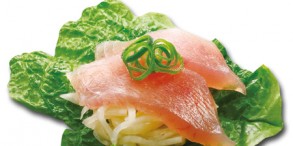"Origami" to revolutionize Architecture?
In case you are not familiar with the term "Origami" yet, remember this is another Japanese word, like Sushi and Sake, enormously popular now in all walks of life - a toy to architectural designing. Ori means "fold"; gami "paper" - totally meaning "paper-folding".
Why is paper-folding suddenly so popular?
To begin with, origami was an artless pastime play for Japanese children decades ago when TV and the rest of today's leisure items were not even on the horizon.
Children would go to toy shops for packets of colored, square papers, 4 x4 inches, and enjoy folding them into objects of different shapes - birds and animals like crane, boat, rabbit, helmet, etc. Each object was complete mostly in five to seven folds.
The most popular is probably a crane which symbolizes good luck. One would take time folding a wreath of thousand paper cranes to bring to one's friend in the hospital as a cheer-up gift.
Believe it or not, this origami has now changed a few non-toy worlds - for instance, the world of architecture. This is what's happening...
Origami features "folding into small sizes", "eventually spreading back into larger sizes" and "being nice and light". These characteristics have helped space scientists to produce solar panels for satellites and aviation engineers light and sturdy plane parts.
That is not enough. Architects have found origami a great tool to design halls and buildings of some size with. Further, designers are looking into the possibility of applying the basic origami concept for creating "foldable portable dwellings" at disaster-stricken areas.
According to NHK, Assistant Professor Tomohiro Tate of Tokyo University, a serious researcher of the art of origami, has this to say:
"When disasters strike, the first mission is to get shelters ready for refugees. I believe it terribly functional to have foldable dwellings ready in advance and unfold them wherever and whenever needed."
Well, I never thought of a paper crane evolving into a foldable shelter! (Nathan Shiga)










